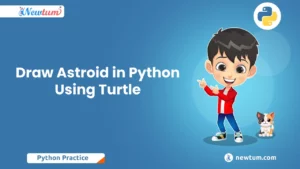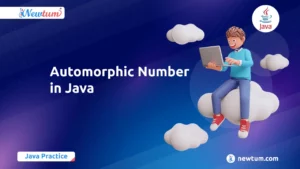Are you ready to dive into the world of coding with a quick yet effective guide? Welcome to our ‘C++ Crash Course in 10 minutes,’ where we’ll swiftly cover the essentials of C++ programming. This powerful language is behind many systems and applications you use daily, from software development to game design. If you’ve ever wondered how to get started with C++ without feeling overwhelmed, you’re in the right place. In just 10 minutes, you’ll gain a foundational understanding that’ll set you on the path to becoming a proficient coder. Stick around, and let’s unravel C++ together!
Setting Up the Environment for C++ Development
Before diving into a C++ crash course in 10 minutes, you need to set up the right tools. This involves installing a C++ compiler and an Integrated Development Environment (IDE) to write and run your code efficiently.
1. Install a C++ Compiler
A compiler converts C++ code into machine-readable instructions. The most commonly used compilers are:
- MinGW (Windows) – Comes with GCC (GNU Compiler Collection) and is widely used.
- GCC (Linux/macOS) – Pre-installed on most Linux distributions and available for macOS.
- MSVC (Windows) – Microsoft’s C++ compiler, included with Visual Studio.
Installation Steps for MinGW (Windows):
- Download the MinGW-w64 setup from MinGW-w64 official site.
- Install MinGW and add the
bindirectory (e.g.,C:\MinGW\bin) to the system PATH. - Verify installation by running
g++ --versionin the command prompt.
2. Choose an IDE for Writing and Running C++ Code
An IDE provides features like code suggestions, debugging, and easy compilation. Some of the best options include:
- Visual Studio Code (VS Code) – A lightweight and powerful editor with extensions for C++ development.
- Code::Blocks – A beginner-friendly IDE that comes with an integrated compiler.
- Dev-C++ – A simple IDE with basic functionalities.
- Eclipse CDT – A robust IDE for larger C++ projects.
Setting Up C++ in Visual Studio Code (VS Code):
- Download and install VS Code from VS Code’s official site.
- Install the C/C++ extension from the Extensions Marketplace.
- Configure a tasks.json file to set up automatic compilation.
- Run your first C++ program using
g++ yourfile.cpp -o outputfilein the terminal.
3. Testing Your Setup
Once your IDE and compiler are ready, test them with a simple Hello, World! program:
#include <iostream>
using namespace std;
int main() {
cout << "Hello, World!" << endl;
return 0;
}
Compile and run the program to ensure everything is working correctly!
Basic Syntax and Structure of a C++ Program
Every C++ program follows a specific structure, which includes essential components like headers, the main() function, and statements. Let’s break down the structure using a simple “Hello, World!” example.
1. Basic Structure of a C++ Program
A typical C++ program consists of:
- Preprocessor Directives – Used to include libraries (e.g.,
#include <iostream>). - Main Function (
main()) – The entry point of a C++ program. - Statements – Code that performs actions (e.g., printing text, calculations).
- Return Statement – Ends the program and optionally returns a value to the OS.
2. “Hello, World!” Program in C++
#include <iostream> // Includes the standard input-output library
using namespace std; // Allows using standard names without std:: prefix
int main() {
cout << "Hello, World!" << endl; // Prints output to the console
return 0; // Indicates successful execution of the program
}
3. Line-by-Line Breakdown
1️⃣ #include <iostream>
- This is a preprocessor directive that includes the iostream library.
iostreamis used for input and output operations in C++.
2️⃣ using namespace std;
- The
stdnamespace contains standard C++ functions and objects. - Without this line, we would have to write
std::coutinstead of justcout.
3️⃣ int main() {}
- Every C++ program must have a
main()function. - The execution of the program starts from
main(). intbeforemainmeans the function returns an integer value (0 in this case).
4️⃣ cout << "Hello, World!" << endl;
coutis used to print output to the console.<<is the insertion operator, directing data tocout."Hello, World!"is the text being printed.endl;moves the cursor to a new line after printing.
5️⃣ return 0;
- Indicates that the program executed successfully.
- Returning 0 is a common convention in C++.
4. Running the Program
Compiling and Running the Code (Using g++)
- Save the file as
hello.cpp. - Open a terminal and navigate to the file location.
- Compile the code using:
g++ hello.cpp -o hello - Run the compiled program:
./hello (Linux/macOS) hello.exe (Windows) - Expected Output:
Hello, World!
This simple program introduces key C++ concepts like headers, namespaces, functions, and output handling. Understanding this structure is essential before moving on to more advanced topics!
Data Types and Variables in C++
In C++, data types define the type of value a variable can store. Understanding data types and variables is essential for writing efficient programs.
1. Fundamental Data Types in C++
C++ provides several built-in data types, which can be categorized as follows:
| Data Type | Keyword | Description | Example |
|---|---|---|---|
| Integer | int | Stores whole numbers | int age = 25; |
| Floating Point | float, double | Stores decimal numbers | float pi = 3.14; |
| Character | char | Stores single characters | char grade = 'A'; |
| Boolean | bool | Stores true or false values | bool isPassed = true; |
2. Declaring and Initializing Variables
A variable is a named storage location in memory. It is declared using a data type followed by a variable name.
Syntax for Declaring a Variable:
datatype variableName = value;
datatype→ The type of data the variable will hold.variableName→ The name assigned to the variable.value→ (Optional) The initial value assigned to the variable.
3. Examples of Declaring and Initializing Variables
#include <iostream>
using namespace std;
int main() {
int age = 21; // Integer variable
float temperature = 36.5; // Floating-point variable
char grade = 'A'; // Character variable
bool isStudent = true; // Boolean variable
// Display values
cout << "Age: " << age << endl;
cout << "Temperature: " << temperature << "°C" << endl;
cout << "Grade: " << grade << endl;
cout << "Is Student? " << isStudent << endl;
return 0;
}
💡 Output:
Age: 21 Temperature: 36.5°C Grade: A Is Student? 1
(In C++, true is represented as 1, and false as 0.)
4. Variable Naming Rules
- Must start with a letter (
A-Zora-z) or an underscore_. - Can contain letters, digits (
0-9), and underscores_. - Cannot use C++ reserved keywords (e.g.,
int,float). - Variable names are case-sensitive (
ageandAgeare different).
✅ Valid Variable Names:
int studentAge; float price_of_item; char firstLetter;
❌ Invalid Variable Names:
int 1stStudent; // ❌ Cannot start with a digit float float; // ❌ "float" is a keyword char my name; // ❌ Spaces are not allowed
5. Best Practices for Using Variables
✔️ Use meaningful variable names (studentAge instead of a).
✔️ Follow camelCase or snake_case naming conventions.
✔️ Initialize variables before using them to avoid garbage values.
📌 Input and Output in C++
In C++, cin is used to take input from the user, and cout is used to display output on the screen. These functions belong to the <iostream> library.
1. Using cout for Output
The cout object (short for character output) prints text and variables to the console using the << operator.
Example: Displaying Output
#include <iostream>
using namespace std;
int main() {
cout << "Hello, World!" << endl;
cout << "Welcome to C++ programming." << endl;
return 0;
}
💡 Output:
Hello, World! Welcome to C++ programming.
📝 endl moves the cursor to the next line (like \n).
2. Using cin for Input
The cin object (short for character input) is used to take input from the user using the >> operator.
Example: Taking User Input
#include <iostream>
using namespace std;
int main() {
string name;
int age;
cout << "Enter your name: ";
cin >> name;
cout << "Enter your age: ";
cin >> age;
cout << "Hello, " << name << "! You are " << age << " years old." << endl;
return 0;
}
Sample Input & Output:
Enter your name: Aadi Enter your age: 12 Hello, Aadi! You are 12 years old.
⚠️ cin only reads one word for strings. To read full sentences, use getline(cin, variable).
Control Structures in C++
Control structures help us make decisions and repeat code execution based on conditions.
1. Conditional Statements (if, else if, else)
These statements allow the program to execute different blocks of code depending on the conditions.
Example: Using if-else
#include <iostream>
using namespace std;
int main() {
int num;
cout << "Enter a number: ";
cin >> num;
if (num > 0) {
cout << "The number is positive." << endl;
} else if (num < 0) {
cout << "The number is negative." << endl;
} else {
cout << "The number is zero." << endl;
}
return 0;
}
Sample Output:
Enter a number: -5 The number is negative.
2. Loops (for, while, do-while)
Loops help execute a block of code multiple times.
🔹 for Loop (Fixed Repetitions)
Used when the number of iterations is known.
#include <iostream>
using namespace std;
int main() {
for (int i = 1; i <= 5; i++) {
cout << "Count: " << i << endl;
}
return 0;
}
Output:
Count: 1 Count: 2 Count: 3 Count: 4 Count: 5
🔹 while Loop (Condition-Based Execution)
Executes as long as the condition remains true.
#include <iostream>
using namespace std;
int main() {
int num = 1;
while (num <= 3) {
cout << "Number: " << num << endl;
num++;
}
return 0;
}
Output:
Number: 1 Number: 2 Number: 3
do-while Loop (Executes at Least Once)
Executes the loop body at least once, even if the condition is false.
#include <iostream>
using namespace std;
int main() {
int num = 10;
do {
cout << "Number: " << num << endl;
num++;
} while (num <= 12);
return 0;
}
Output:
Number: 10 Number: 11 Number: 12
Did you know you can test your C++ code instantly without heavy installations? Our AI-powered cpp online compiler allows beginners to write, run, and test code efficiently. It’s the perfect companion for practicing coding anywhere, anytime. Give it a shot—you’ll love the ease it brings!
Functions in C++
Functions allow us to break down complex programs into smaller, reusable modules, making the code organized, readable, and maintainable.
1. Defining and Calling a Function
A function consists of:
1️⃣ Return Type: Specifies what the function will return (e.g., int, void, float).
2️⃣ Function Name: A meaningful name for the function.
3️⃣ Parameters (Optional): Inputs passed to the function.
4️⃣ Body: Contains the logic inside {}.
5️⃣ Return Statement (Optional): If the function returns a value, it uses return.
Example: Function Without Parameters
#include <iostream>
using namespace std;
// Function definition
void greet() {
cout << "Hello, welcome to C++!" << endl;
}
int main() {
greet(); // Function call
return 0;
}
💡 Output:
Hello, welcome to C++!
2. Function With Parameters
We can pass arguments to functions to perform specific tasks.
Example: Function With Parameters
#include <iostream>
using namespace std;
// Function with two parameters
void addNumbers(int a, int b) {
cout << "Sum: " << (a + b) << endl;
}
int main() {
addNumbers(5, 10); // Function call with arguments
return 0;
}
💡 Output:
Sum: 15
3. Function Returning a Value
If a function needs to return a result, we specify a return type instead of void.
Example: Function Returning a Value
#include <iostream>
using namespace std;
// Function to calculate the square of a number
int square(int num) {
return num * num;
}
int main() {
int result = square(4); // Function call
cout << "Square: " << result << endl;
return 0;
}
💡 Output:
Square: 16
Basic Object-Oriented Programming (OOP) in C++
C++ supports Object-Oriented Programming (OOP), which organizes code into objects and classes.
Key OOP Concepts:
✅ Class: A blueprint for creating objects.
✅ Object: An instance of a class.
✅ Encapsulation: Grouping related variables and functions inside a class.
1. Creating a Class and Object
A class is like a template, and objects are real-world entities created from it.
Example: Defining a Class and Creating an Object
#include <iostream>
using namespace std;
// Defining a class
class Car {
public:
string brand;
int speed;
// Method to display details
void showDetails() {
cout << "Car Brand: " << brand << endl;
cout << "Speed: " << speed << " km/h" << endl;
}
};
int main() {
Car myCar; // Creating an object
myCar.brand = "Tesla";
myCar.speed = 200;
myCar.showDetails(); // Calling method
return 0;
}
💡 Output:
Car Brand: Tesla Speed: 200 km/h
2. Using Constructors in a Class
A constructor initializes an object when it is created. It has the same name as the class and runs automatically.
Example: Constructor in C++
#include <iostream>
using namespace std;
class Student {
public:
string name;
int age;
// Constructor
Student(string n, int a) {
name = n;
age = a;
}
// Method to display details
void display() {
cout << "Name: " << name << ", Age: " << age << endl;
}
};
int main() {
Student s1("Aadi", 12); // Object with constructor
s1.display();
return 0;
}
💡 Output:
Name: Aadi, Age: 12
Arrays and Pointers in C++
Arrays store multiple values of the same data type in contiguous memory locations.
Example:
int numbers[3] = {10, 20, 30};
cout << numbers[1]; // Output: 20
Pointers store the memory address of a variable.
Example:
int num = 10; int *ptr = # cout << *ptr; // Output: 10 (dereferencing)
Arrays and pointers are closely related since an array name acts as a pointer to its first element.
Example:
int arr[] = {1, 2, 3};
cout << *(arr + 1); // Output: 2
Pointers enhance memory efficiency and are crucial in dynamic memory allocation.
Real-Life Applications of C++ in Everyday Technology
C++ Crash Course in 10 minutes is perfect if you’re diving into programming and want to grasp C++ quickly. Why’s C++ popular? Its robustness and versatility make it a favorite in many industries! Let’s explore some real-world scenarios where companies have utilized C++ effectively:
- Gaming Development: Game developers love C++ because of its speed and performance. Companies like Ubisoft and Electronic Arts use C++ to design complex game engines that offer high-quality graphics and smooth gameplay. Developers can optimize memory usage, a crucial factor in creating immersive game environments.
- Finance and Trading Systems: Financial firms such as Morgan Stanley employ C++ to develop high-frequency trading platforms. These systems require high speed and efficiency to process numerous transactions within seconds. C++ permits precise memory management, which enhances system performance and reliability.
- Embedded Systems and IoT: Many tech giants like Samsung and Bosch use C++ for embedded system projects. These applications need a language like C++ that offers control over system resources, making it ideal for developing software for microcontrollers and Internet of Things (IoT) devices.
- Web Browsers: C++ contributes significantly to the development of web browsers such as Google Chrome and Mozilla Firefox. It helps manage large codebases to ensure browsers are responsive and secure, providing a seamless browsing experience.
- Real-Time Systems: C++ powers real-time systems in various sectors, including automobile and aerospace. Companies like Boeing use C++ in avionics to process data swiftly with minimal delay, crucial for ensuring passenger safety and mechanical efficiency.
These examples highlight the profound impact C++ has in various industries, showcasing its relevance and power in solving complex problems efficiently!
Conclusion
In this C++ Crash Course in 10 minutes, you’ve explored the basics of C++. With practice, these concepts will become second nature. Ready to deepen your learning? Check out Newtum for more resources and tutorials. Keep coding, and see where it leads you!
Edited and Compiled by
This blog was compiled and edited by @rasikadeshpande, who has over 4 years of experience in content creation. She’s passionate about helping beginners understand technical topics in a more interactive way.



